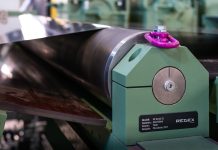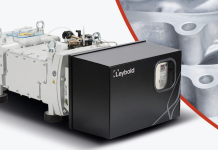PEI VM Srl is an engineering company located in Bologna that, through the consulting activity and the development of specific tools, has succeeded in establishing its reputation on the market, backed by over twenty years of expertise in the NVH (Noise, Vibration & Harshness) field. With Cristian Fantuzzi, Chief Operating Officer & Managing Director, we speak about the activities that characterize this innovative reality, with headquarters in Zola Predosa (BO).

For what does your market offer stand out?
The main core of PEI VM activity is the capability to analyse – in an objective and not subjective way – the “heart-beating” produced by rotating machines like gearboxes, electric drive, pumps, internal combustion engines, and so on. This was reached through several years of intense experimental activity, aimed at developing specific analysis modules for machines to diagnose and monitor their healthy status: among the most “speaking” signals which can be used for this purpose, there are vibrations and noise, relatively simple to measure, but very complex to be analysed.
Axles, gearboxes, electric motors, combustion engines, pumps and automatic machines need, to be able to identify defective component and assembly anomalies, a characterization of the “sound footprint” or “vibration footprint” produced by the “defective” product through accurate measurements. PEI VM carries out this characterization both in-house, relying on a complete set of instruments and a semi-anechoic chamber, or directly on customer side.
The expertise gained with consultancy over twenty years of activity has been progressively transferred into a proprietary system / software called VMGears.
VMGears software modules are continuously developed, in order to tune the diagnostic algorithms in function of the specific defects of the products / manufacturing processes of our customers.


What are the strong points of PEI VM?
Almost all types of industrial machines contain rotating parts undergoing impacts, frictions, contacts and unbalances resulting in excitation forces that, propagating by material continuity throughout the whole machine structure, generate surface vibrations and consequently sound waves, inherent to the operation itself of the machine and therefore always present and almost always detectable.
These signals, if suitably processed, can reveal important information about the state of health or of wear of the inner components of the machine, also in view of a real forecast of its lifecycle: the main strong point of PEI VM is precisely represented by the capability of developing “dedicated” analysis algorithms for each machine category, and for each type of defect.
Now VMGears software contains 4 modules dedicated to 4 types of machines: gear transmissions, electric motors, combustion engines and pumps. The interface is simple and lean, and it directly shows to the operator, through red icons, what the defective components inside the measured machine are, and what type of defect is: therefore, the system is usable also by unexperienced staff in the signal analysis.
How is the offer of your products organized?
VMGears is a multi-environment diagnostics system structured in different versions for different applications.
VMGears RD is a portable system for measurements in the testing room or in the field; it is a system consisting of an anti-impact IP65 luggage in trolley format, containing PC, acquisition board and a room for sensors and cables. It is extremely flexible, it is configurable/expandable from three to thirty-two channels, and it allows measuring not only vibration and noise but also other physical variables (for instance, flow rates, pressures, temperatures, etc..).
VMGears QC is a system dedicated to the quality control of the product and of the assembly process, running a targeted analysis of the vibrational signal measured in the end-of-line test. It can be integrated into fully automated assembly plants, it communicates with the line supervisor with dedicated protocol and after each test results are automatically saved into a dedicated PostgreSQL database, which can be accessed for statistical analysis from VMGears itself or from external programmes such as Q-DAS or Power-BI. VMGears QC belongs to the instruments targeted to production process automatic improvement and belongs to IIoT (Industrial Internet of Things) tools: VMGears is an Industry 4.0 instrument, with consequent fiscal benefits.
VMGears DM is dedicated to the monitoring of endurance tests, permitting to map the evolution over time of defects such as dent teeth, pitting, pitch errors, eccentricity, anomalous impacts, piston slap, unbalanced rotors. VMGears DM is programmed once at the beginning of the durability test, and it works for hundreds of hours measuring and calculating continuously, and reporting to the user the defect rates. It involves a PC and the signal conditioning electronics, and carries out measures and analyses according to an automatic cycle that can be programmed at any time. The system processes indicators connected with the various defect typologies, monitoring their evolution in time and issuing an alarm when acceptability thresholds are exceeded.
Applicative cases?
There are a lot of applications, because some clients ask PEI VM to monitor their durability tests as a service (which is surely an option, as well as the purchase of the system).
For instance, recently a primary automotive company asked PEI VM to monitor an endurance test of a gear axle equipping a hybrid car: after 120 hours the eccentricity index of the intermediate shaft, as well as the defect indexes of the bearings supporting this shaft, were rising with a high gradient, revealing a serious damage on the shaft supports. This information was of fundamental importance to do an inspective stop and to avoid a sudden failure, which would have made impossible to trace the root cause of the problem.

VMGears DM revealed to be a fundamental tool for the product development, in order to identify the most critical zones in design terms, and to complete the VMGears range: VMGears RD characterizes the prototype development in comparison with different manufacturing solutions and versus competitors, VMGears QC system carries out a quality control of the new product (on each product that travels on the line), whereas VMGears DM checks what component tends to fail first under stress. The use of dedicated algorithms proves to be essential to intercept in targeted manner the component (or the components) subjected to wears and damages, especially in case of complex kinematic chains.



